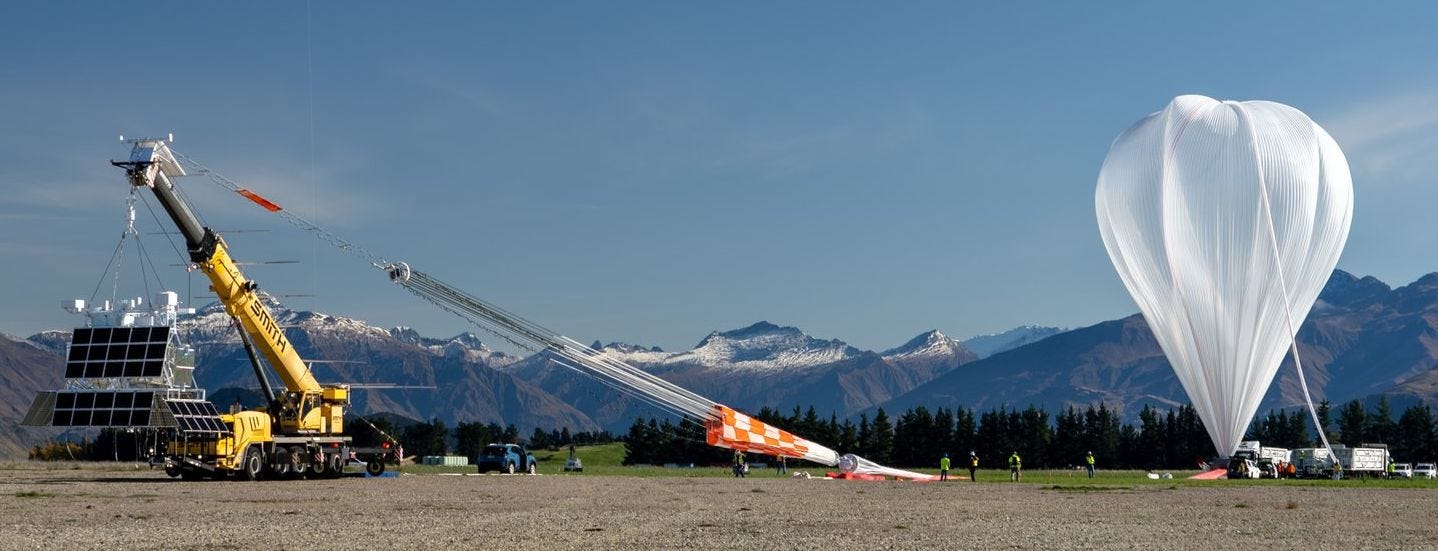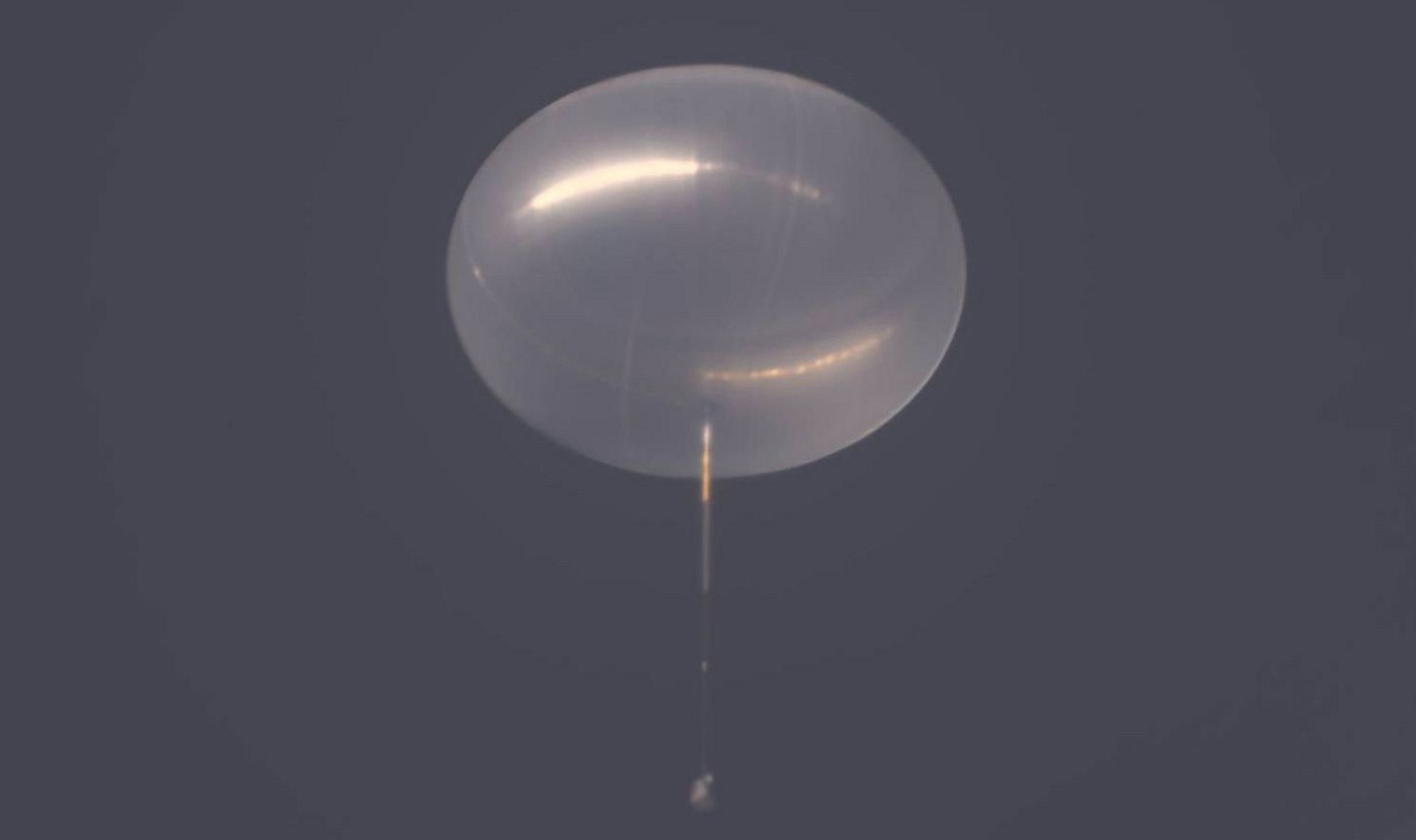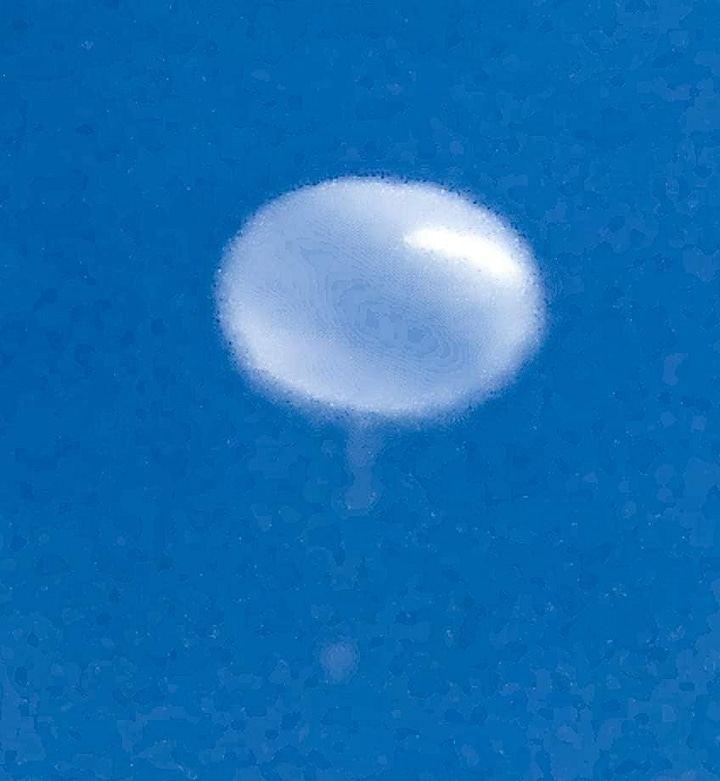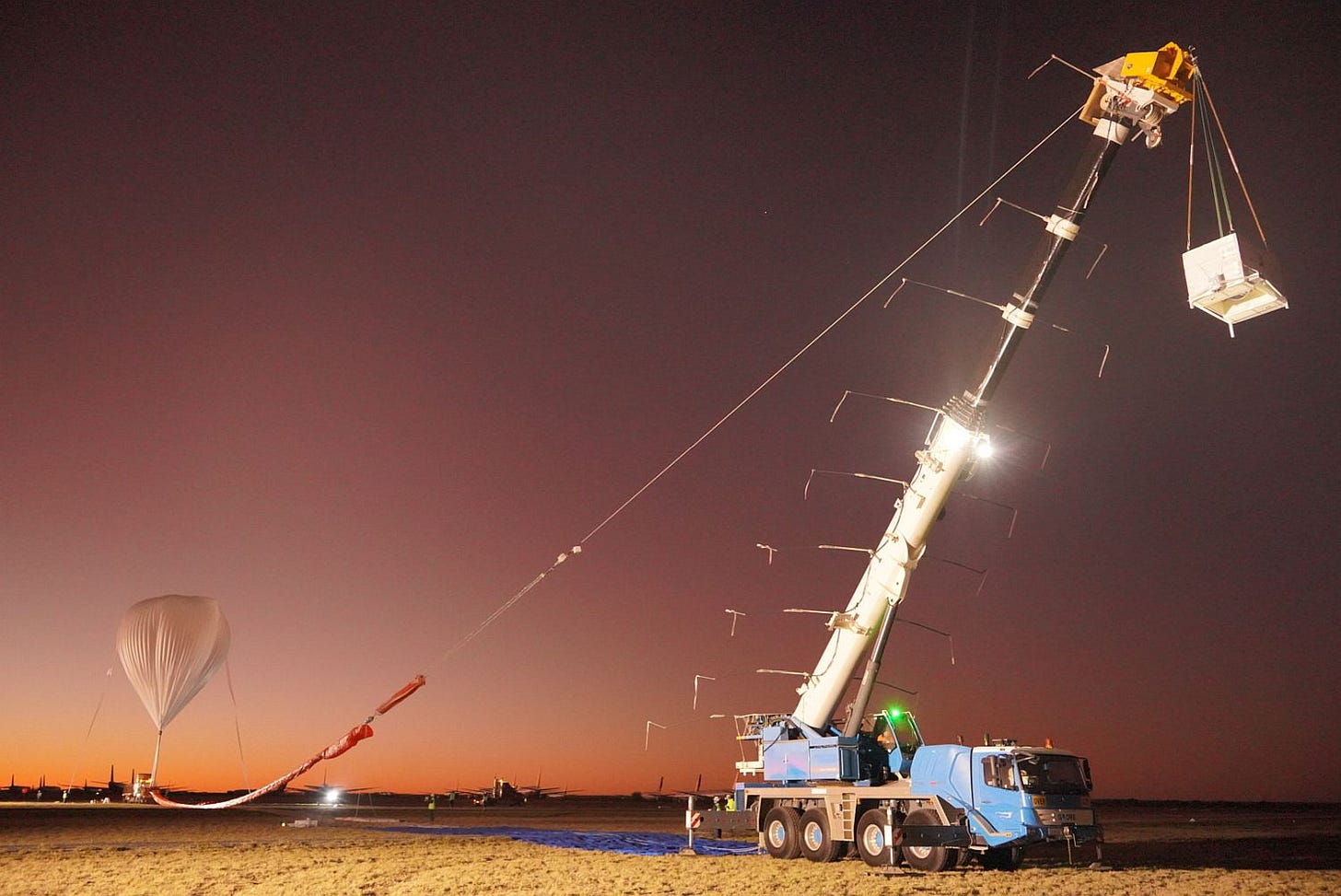The second Super Pressure balloon launched from Wanaka developed a leak and failed
The excitement expressed by NASA for having two Super Pressure Balloons (SPB) circling for weeks in the southern hemisphere endured merely 37 hours: the balloon that would put the EUSO-SPB2 experiment in the stratosphere for weeks developed a leak during the second night aloft and finally ended with its cargo in the bottom of the Pacific Ocean.
The balloon was launched as mission 729NT from the Wanaka Airport a couple of minutes after midnight on May 13, 2023, according to UTC time. The launch was carried out smoothly and without incidents after two previous attempts in the last weeks and after some delays due to the bad weather that affected the South Island of New Zealand.

The payload onboard was EUSO-SPB2, an acronym for Extreme Universe Space Observatory on a Super Pressure Balloon - Second Generation, a cosmic ray experiment that would serve as a pathfinder mission for future space-based experiments. It was designed to identify and quantify the various backgrounds relevant to the space-based detection of cosmic rays and neutrinos using two telescopes: a fluorescence telescope, which pointed directly downward and was designed for the measurement of cosmic rays, and a Cherenkov telescope, which pointed near the Earth's limb and was designed for the measurement of Earthskimming neutrinos and direct (above-the-limb) cosmic rays.
Unlike the first SPB launched in April, which performed quite a tour around the “Middle-earth” (wink, wink) before starting his multi-oceanic journey, this one took a straight course to the sea; thus, there were fewer graphic testimonies of its pass. The only remarkable exception is the picture below taken by members of the Canterbury Astronomical Society at the Honorata Night Glow event on the same day of the launch.

The first hours of the flight passed without incident. The arrival of the first night allowed the scientific team to begin evaluating the performance of their instrument, which seemed to be working fantastically well. However, during the second night aloft, the balloon started to lose altitude.
The night the failure occurred, I couldn't sleep. At 3 AM in my time zone (UTC -3) I turned on my laptop and checked where the balloon was. It was enough for me to see the flight altitude to know that something was not right: the balloon, which was supposed to be flying at about 107,000 feet was floating 30.000 feet below that mark and steadily descending.
After a quick check of the telemetry file it was evident that sometime between 3:46 UTC and 4:00 UTC, the balloon experienced a sharp decrease in altitude of more than 3.000 feet which for this kind of balloon was abnormal.
An hour passed and EUSO-SPB2's payload was still above 70,000 feet. The slow rate of descent was an indication that neither a catastrophic outburst nor the balloon/payload separation and subsequent descent under a parachute had occurred: everything pointed to a gas leak in the balloon.
It took almost six more hours to hit the Pacific Ocean. Impact occurred about 13:00 UTC on May 14, 2023, in a point located 1000 kilometers SW of Rapa Iti a small island that is part of the French Polynesia.

During the last hour of descent, it is very likely that the balloon has been completely emptied of helium in order to accelerate its final speed. In this way, and following the standard procedures established by NASA, the weight of the payload acts as an anchor that sends both the payload and the balloon to the bottom of the ocean, preventing them from posing a danger to navigation or marine fauna if it remains floating in the upper marine layers.
Both NASA and the scientists participating in the long-duration balloon flights in the southern hemisphere are well aware of the risk of losing its cargo. On one hand, the SPB is still experimental and the instruments transported on board are flown as “payloads of opportunity”, on the other hand, this is not the first time that this occurs: in 2017 the same scientific group flew a previous iteration of EUSO-SPB2 for 17 days before a leak in the balloon also sent their experiment to the bottom of the Pacific Ocean, 370 km SE of Easter Island.
As often occurs in ballooning the chance of obtaining good science is worth the risk.
According to information published by Etienne Parizot, a member of the scientific team of EUSO-SPB2, the two nights the instrument was aloft included one night of taking data in optimal configuration. In this regard, the team obtained data until the last minute and thanks to the Starlink satellite system (that was used for the first time during this year’s campaign) they were able to download much of the information obtained.
The data includes about 50.000 "events" triggered by the fluorescence telescope, and still other data taken by the Cherenkov telescope. According to the best estimates of the scientific team, there is some chance that among those events, may have recorded a shower of cosmic rays, which would be the first ever detected from above, using the fluorescence technique.
Meanwhile, the first SPB launched in April carrying the Super-BIT telescope continues its unperturbed journey around the southern hemisphere. At the time of writing these lines, the balloon is halfway to completing its fifth world tour and so far has traveled more than 122,000 kilometers, which is equivalent to almost a third of the distance that separates the Earth from the Moon.
Of the last two passes that the balloon made over South America, only the first allowed a privileged few from the area near the city of San Carlos de Bariloche, in the Argentine Province of Río Negro, to appreciate the passage of the balloon, as we can see in the images below. The second pass that occurred two days ago (strictly speaking, the fifth since the beginning of the balloon's journey) took place at night.


To end this brief chronicle, I want to tell you that a few days ago, I contacted someone very close to the team that developed the Super-BIT telescope with the intention of conducting an interview in the future when the mission is finished.
However, an interesting comment derived from the talk was the importance that the use of the Starlink satellite system is having in this campaign, which allows the download of the large volume of data that the telescope obtains every night.
Until now, despite having crossed Argentine territory several times, the scientific team did not yet consider it necessary to eject any of the four data recovery capsules that the telescope carries. The possibility of using them towards the end of the mission (planned to last 100 days) is being studied in order to obtain full data sets, but this has yet to be determined.
JAXA completes balloon campaign in Australia
On May 11, 2023, merely four days before the closing of the launch window, the Japanese Exploration Agency (JAXA) finally launched the second and last balloon mission of their overseas launch campaign in Australia. As occurred with the first flight the operation was carried out from the Alice Springs Airport.
The balloon was launched at 22:09 UTC and after a nominal ascent, it reached the test altitude of 39 kilometers in about two hours. After another two hours of leveled flight to reach the drop area assigned by the Civil Aviation Safety Authority of Australia over the Simpson Desert, at 1:55 UTC the capsule was jettisoned from the gondola and landed in an area about 270 km east of Alice Springs.
After completion of the test, the balloon continued in flight for more than 3 hours until at 5:05 UTC the rest of the on-board equipment was separated by radio command and descended about 500 km east of Alice Springs, in Queensland.
Both, the capsule and the rest of the hardware were recovered undamaged.

The objective of the flight was to conduct a drop test of the Sample Return Capsule (SRC) a Hayabusa-type capsule to evaluate its aerodynamic stability, parachute release, canopy opening, and deceleration performance in the transonic and low speeds regimes.
According to JAXA and Australian sources, the test was completed successfully and all objectives were met.
The concluded campaign follows a long history of cooperation between Australia and Japan in the scientific ballooning field dating back to the 1970’s decade and was recently endorsed by an agreement between JAXA and the Commonwealth Scientific and Industrial Research Organization (CSIRO). All the operations counted on the strong support of the Balloon Launching Station managed by the University of New South Wales.
Balloon launch by Near Space Corporation from Tillamook
On May 12, 2023, Near Space Corporation (NSC), the balloon firm based in Tillamook, Oregon performed a high-altitude balloon mission from its launch facility in that city known as the Johnson Near Space Center.
The balloon was launched at 13:10 utc and after ascending to 95.000 ft it ended its flight and landed in an area located 21 km east of the launch base. During the last part of the flight, a second transponder was activated and followed a flight path totally different from the erratic pattern of the balloon, a clear indication that some sort of autonomous vehicle or capsule was dropped from it.

In general, NSC is very reluctant to publish any details about its missions so is very likely that we will learn about the test -if ever- from third parties sources. Despite that, by chance, I could be found some clues about the nature of the payload. The same transponder used for the payload on the mission I’m commenting was activated on April 27, and April 28 for a brief period in the city of River Hood, Oregon.
A quick search on the location of the activation led me to the website of Power4Flight a small business focused on providing Unmanned Aircraft Systems powertrain components, including integrated starter/generators, Electronic Fuel Injection (EFI), and power conditioning electronics, so I could conclude that the payload transported was some kind of small drone or UAV, like the HASS platform developed by NSC.
SCEYE airship test in Roswell causes an impact on social media.
In what appeared to be footage taken from the Sci-Fi movie “ARRIVAL” a shiny object hanging vertically above Roswell captured the attention of that intense circle called “UFO-Twitter” on May 17th, 2023 when several users started to share a video that showed the peculiar vehicle.
An unedited/uncommented version of the video is below these lines.
After a brief research on the ADS-B network at the time of the sighting, it was clear that the object had nothing to do with the Heptapods with which Amy Adams tried to communicate in the aforementioned film. It was very terrestrial and of well-known origin: the SCEYE INFINITY stratospheric airship.
SCEYE is a Swiss company that aims to use solar-powered stratospheric airships to improve internet access in rural and remote areas. The flight took place at the company's facility located close to the North end of the 17/35 runway in the Roswell Air Center in New Mexico.
The flight endured 2 hours and a half with a maximum altitude of flight about 56.000 feet. The craft landed in a desert/rural area in Chavez County 27 km east of Roswell.
The next day, the company published a statement about the test on its Instagram account along with a little video showing the view from the vehicle in flight.
Yesterday, Sceye completed a major milestone with another flight in the stratosphere. The flight test demonstrated attitude control and pitch stability which are key capabilities necessary for station-keeping over an area for extended periods of time. We are beyond proud of the team for completing this milestone that brings us even closer to providing connectivity for the unconnected as well as observations of natural disasters and infrastructure.
At this time, the debate still persists in some forums and websites, as always happens when the terms UFO or UAP are involved in the conversation. And even more, if the event occurs in the world capital of UFOs: Roswell
Other news in Brief
On May 19, 2023, the Massachusetts Institute of Technology informed that George Clark, professor emeritus and X-ray astronomy leader, died last April. He was 94 years old. Among her many contributions to science, his influential work in the use of balloon-borne instrumentation for observing celestial X-ray sources led to his discovery of high-energy X-rays from the Crab Nebula in the 1960s decade. He worked very closely at MIT with his colleague William Kraushaar in creating balloon-borne experiments to detect a very rare component of primary cosmic radiation. After he moved to other areas of interest, the balloon program he founded continued with productive results under Clark’s graduate student James Overbeck, and then under Professor Walter Lewin.
Last month, the International Astronomical Union validated the baptism of an asteroid in honor of Jacques Blamont, who died in April 2020. The asteroid discovered on December 1998 by the Caussols Observatory now bears the name of the French astrophysicist who was notably the founder in 1958 of the first French space laboratory and then in 1962 he was the first scientific and technical director of CNES. Blamont inspired and directed a large number of experiments in sounding rockets, balloons, and satellites, as well as being the initiator of numerous international cooperations. He participated in planetary exploration missions and within the framework of Franco-Soviet cooperation, he proposed sending balloons into the atmosphere of Venus and Mars. Among his main discoveries were the terrestrial turbopause, the interstellar wind, the envelope of comets, and polar noctilucent clouds.
Although Helium is one of the most abundant elements in the Universe, its in short supply here on Earth, and very difficult to extract it in a cost-efficient manner, affecting costs and availability in sensitive areas of science and of course scientific ballooning too. In a recent article published in Gas World, North American Helium, the Calgary-based gas company announced in early May that has brought its sixth helium purification facility onstream near Mankota, Saskatchewan. Positioned adjacent to the company’s current plant, the new site doubles the area’s total helium production to over 50 million cubic feet per year. That plant is one of three that have been brought onstream by the helium exploration and production company in the last five months.
New contents in StratoCat
This week, I’ve worked on the flight sheets of several different balloon missions in a very eclectic pattern, as usual.
A detailed description of a 1978 balloon flight performed by the Instituto Nacional de Pesquisas Espaciais (INPE) from Brazil for the OLINDA experiment aimed at measuring the flux of gamma-ray photons of galactic and atmospheric origin and the lines of this radiation, produced by high-energy nuclear reactions. The project was of great interest at the time because was aimed to later be used on board a small plane for the prospection of uranium-bearing regions on the earth's surface.
Added some pictures I found in an old conference presentation on JACEE 2 balloon mission carried out by the National Scientific Balloon Facility in 1980. JACEE was the acronym for the Japanese American Collaborative Emulsion Experiment, a scientific effort carried out to measure the composition and spectra of primary cosmic rays at the top of the atmosphere, using emulsion chambers transported by stratospheric balloons.
Finally, a full report including unpublished images of the flight of the Argentinian Infrared Telescope ALIR-1 developed by Instituto de Astronomia y Fisica del Espacio (IAFE) and flown in 1980 from the Resistencia International Airport in Chaco, Argentina.
That’s all folks! Thanks for reading this. If you like it, spread the word and bring new friends to join.
See you in a few days.





